Currants are among the most low-maintenance fruit-bearing shrubs. One of the few reasons for plant loss and reduced yield is fungal infections. The most common disease affecting currants is powdery mildew.
There are many specialised fungicides for powdery mildew. While highly effective, they often contain chemicals harmful to both humans and plants. That’s why many gardeners prefer natural remedies. Discover the most effective solutions below.
Table of contents
What Is Powdery Mildew?
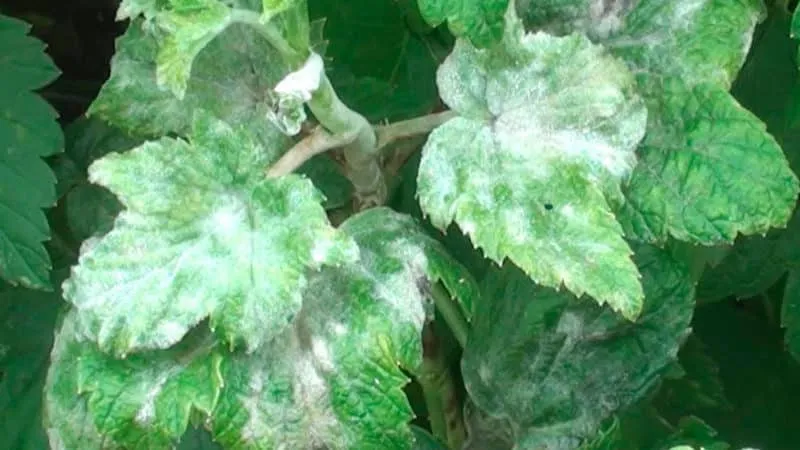
Powdery mildew is a disease caused by a parasitic fungus. The pathogen overwinters in the soil near plant roots. In summer, the fungus becomes active and, under favourable conditions, begins to spread, infecting the above-ground parts of the currant bush.
The disease typically appears in June, with outbreaks peaking in July or August. This is the critical period to protect your garden from fungal infections.
Powdery mildew doesn’t just affect the plant’s appearance and fruit flavour — it also reduces yield, as infected berries drop before ripening.
Leaves become coated in a dense layer of fungal growth, blocking photosynthesis. Without proper nutrition, the plant weakens and eventually dries out.
The fungus also lowers the shrub’s immunity and frost resistance — infected currants may not survive winter.
Note: Black currants are most susceptible to powdery mildew. Red varieties are less vulnerable, while white currants show the highest resistance.
Symptoms of the Disease
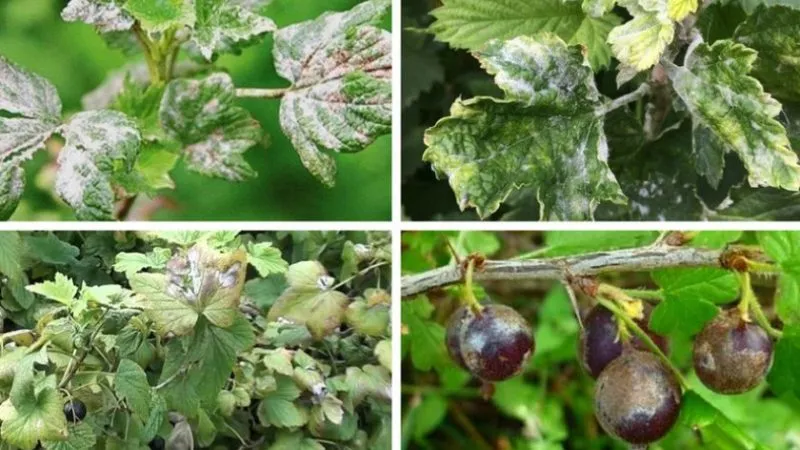
Early detection is crucial, as most natural remedies work best in the initial stages.
Signs of powdery mildew infection:
- White, semi-transparent patches appear on leaves. These cannot be wiped off. Symptoms first appear on lower leaves, spreading upwards.
- Patches become denser. Tiny water droplets form on the fungus, making leaves appear wet.
- Growth stunting. New shoots deteriorate, and cold tolerance decreases.
- Leaves lose vibrancy, curl, wither, and eventually fall.
- Berries develop white coating that later turns brown. Fruits fail to ripen and drop prematurely.
The white fungal coating on leaves is the earliest and most recognisable symptom.
Causes of Infection
While the fungus Sphaerotheca morus-uvae Berk causes powdery mildew, certain conditions trigger outbreaks:
- Infected planting material (fungal spores survive on seeds and saplings)
- Excessive moisture (overwatering, heavy rainfall, poor drainage)
- Sudden temperature fluctuations (especially with high humidity)
- Improper pruning (particularly ill-timed rejuvenation cuts)
- Overuse of nitrogen fertilisers (promotes fungal growth)
- Insufficient sunlight (fungus thrives in shade from poor placement or overcrowding)
- Irregular watering (drought weakens plant immunity)
- Compacted soil (limits root oxygenation)
- Weeds (harbour fungal spores)
- Insects (spread fungal spores)
Natural Remedies for Powdery Mildew on Currants
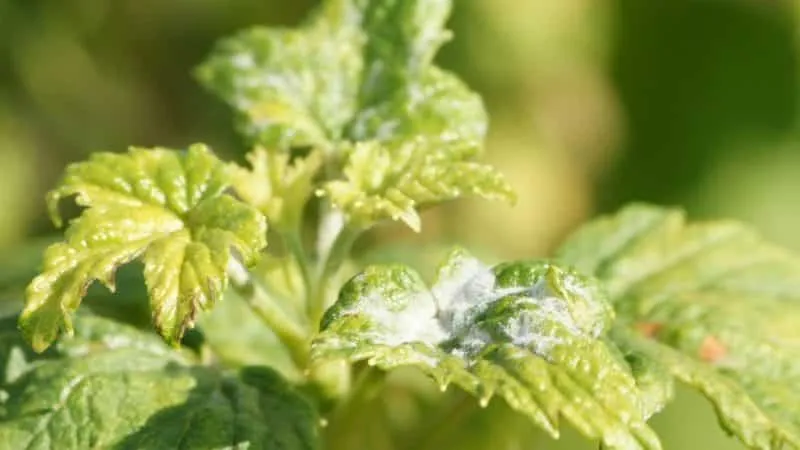
Natural treatments are safe alternatives that leave no harmful residues in berries. Many use common household items:
- Onion skins: Fill a bucket 1/3 with skins, top with boiling water, steep for 24 hours. Use as preventive spray.
- Ash-soap solution: Mix 1kg ash, grated soap bar, and 10L boiling water. Steep 48 hours. Spray every fortnight.
- Tansy decoction: Steep 300g dried tansy in 10L water for 24 hours, then simmer 2 hours. Use as soil drench.
- Baking soda spray: Combine 1 cup soda, grated soap, and 10L water. Apply weekly.
- Whey solution: Mix 1L whey/kefir with 9L water. Spray every 3 days in dry weather.
- Iodine milk: 2L milk + 20 iodine drops + 8L water. Weekly application for early infections.
- Rapeseed oil: 10ml oil per 10L water. Spray every 3 days.
- Horsetail tea: Soak 500g fresh horsetail in 5L water for 24 hours, boil 2 hours. Dilute 1:5 before weekly use.
- Garlic infusion: Fill bucket 1/3 with chopped garlic scapes, add water, steep 24 hours. Weekly spray.
- Manure tea: Mix fresh manure with water (1:2), ferment 4 days. Dilute 1:10 before spraying.
- Potassium permanganate: ½ tsp per 5L water for early-stage treatment.
- Mustard powder: 1 part mustard to 5 parts warm water. Steep 24 hours before spraying.
Tip: Natural remedies work best preventatively or at infection onset. All listed solutions serve both purposes.
Application Guidelines
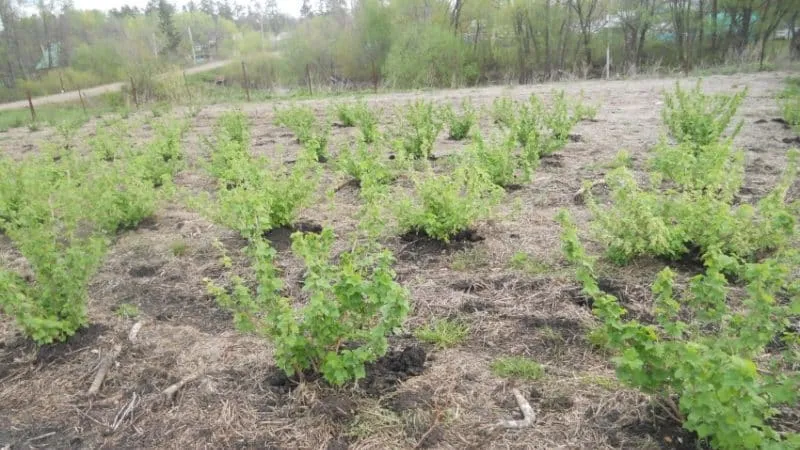
For effective treatment, follow these steps:
- Remove all infected parts, treating cuts with ash.
- Rinse bushes thoroughly with strong water spray.
- Replace topsoil around infected and nearby plants with fresh soil treated with copper sulphate.
- Apply chosen remedy as directed.
- Treat neighbouring plants preventatively.
Safety Measures
Even natural treatments require precautions:
- Wear gloves and mask during application (some mixtures irritate skin/lungs)
- Test new solutions on small sections first
- Apply early morning or evening to avoid leaf burn
- Strictly follow recommended concentrations
- Provide extra winter protection (mulch + covering) for recovered plants
Prevention Strategies
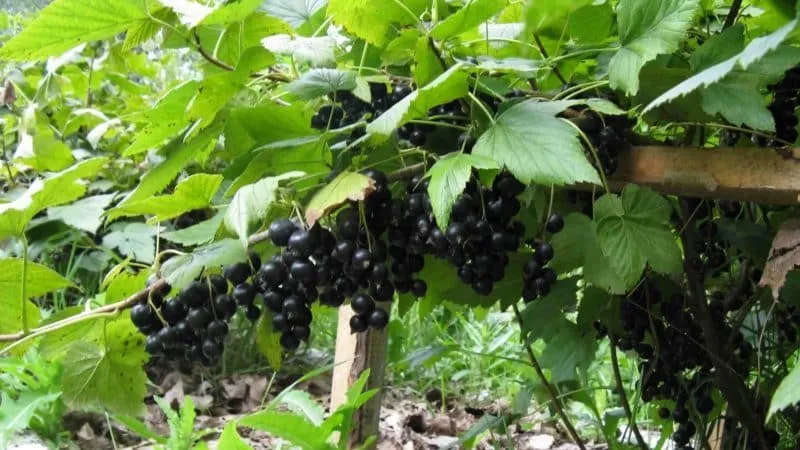
Preventive care avoids difficult treatments and plant stress:
- Disinfect: Treat tools, soil, and new plants with potassium permanganate or copper sulphate.
- Aerate soil: Regular cultivation prevents compaction.
- Control weeds: Eliminate infection reservoirs and improve air circulation.
- Mulch: Use straw or wood chips to suppress weeds and regulate moisture.
- Ensure drainage: Add gravel to planting holes.
- Prune properly: Annual spring pruning removes diseased wood and improves sunlight penetration.
- Select sunny sites: Avoid low-lying areas with high water tables.
- Preventative sprays: Apply copper sulphate solution (1 tbsp/10L water) in spring, midsummer, and autumn.
- Pest management: Control insects that spread spores.
- Balanced fertilisation: Limit nitrogen to spring applications.
- Consistent watering: Weekly deep watering (twice weekly in droughts) with room-temperature water.
- Choose resistant varieties: Modern hybrids offer superior fungal resistance.
Conclusion
Powdery mildew — identifiable by white fungal patches on leaves, stems and fruit — weakens plants by impairing photosynthesis and cold hardiness, often leading to death. Natural remedies provide effective, eco-friendly solutions when applied correctly, especially during early infection stages. Combined with proper cultural practices, they help maintain healthy, productive currant bushes without chemical residues.







